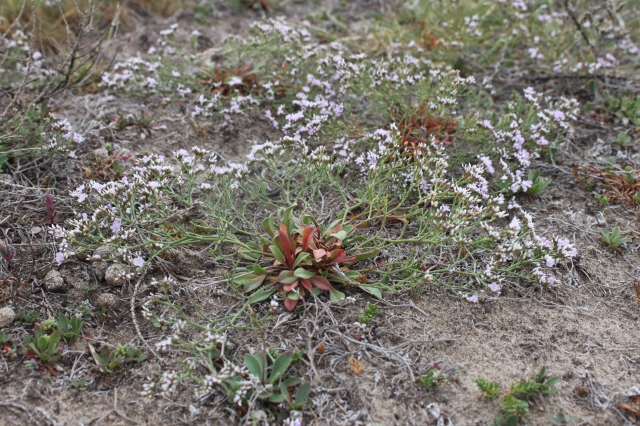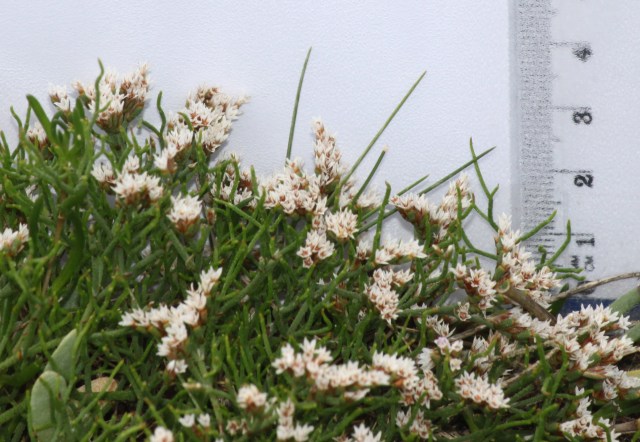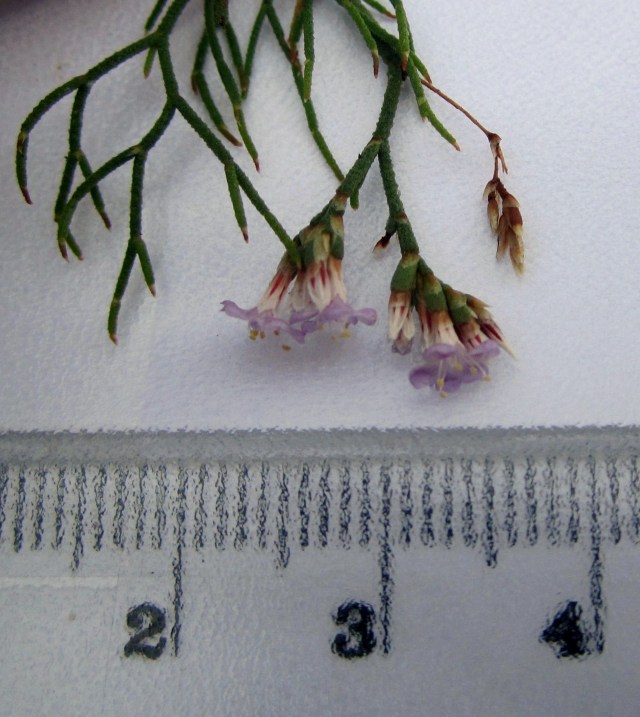Stace (2010) pg 429/ Stace (2005) pg 200/ Rose & O’Reilly (2006) pg 172/ BSBI Distribution map: http://www.bsbimaps.org.uk/atlas/map_page.php?spid=1147.0
This species is a “Red data” list species so quite a special plant to find.
As members of the Plumbaginaceae family, they are perennials, leaves are basal, narrowed to base, simple in shape without stipules. Flowers are in branched cymes (in the lavenders case). The calyx is fused proximally with free scarious lobes distally. Petals 5, stamens 5, ovaries 1 celled (Stace 2010).
Matted Sea-lavender, Limonium bellidifolium is one of the more distinguishable Sea-lavender species on Blakeney Point as it grows decumbent (lies across the ground turning upwards at tip) across the flat areas between dunes on the intertidal and shingled areas though could also be found on the drier parts of the saltmarsh (Stace 2005).
Stems are decumbent growing up to 30cm (Stace 2010).
It has short, obovate leaves (with a 2 veined base and no pinnate veins) which look similar to Rock Sea-lavender, Limonium binervosum but can be distinguished as Matted, L.bellidifolium as inflorescences lie prostrate (sprawling horizontally). Also stalks are more slender and fork repeatedly (Rose 2006).
In addition, most branches are flowerless and those that have flowers have them clustered only in the uppermost branches (Rose 2006). Leaves actually die once the attached branch has flowered. Spikes mostly <1cm very dense with >1o spikelets (Stace 2005). Note picture below only shows outer bracts as corollas have dropped off:
Flowers have white, papery outer bracts with pale pink corollas, 5mm across (Rose 2006):




